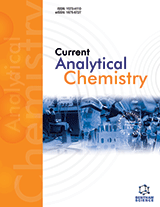Abstract
The enzyme protein:geranylgeranyl transferase-1 (PGGT-1 or GGTase-I) catalyzes the geranylgeranylation of cysteine residues near the C-termini of a variety of proteins, including most monomeric GTP binding precursor proteins belonging to the Rho, Rac and Rap subfamilies. These proteins are involved in signaling pathways controlling important processes such as cell differentiation and growth. In the framework of the development of therapeutics against disorders associated with aberrant cell proliferation, the interference with these signal transduction cascades has been a major focus of investigation. For instance inhibitors of PGGT-1 have shown promise in the treatment of cancer, smooth muscle hyperplasia as well as parasitic infections, such as malaria. In this review, structural and mechanistic aspects of the protein:geranylgeranyl transferases are discussed as well as their importance with respect to the terpene metabolism. An extensive summary of reported inhibitors of PGGT-1, classified as natural products, peptide substrate (Ca1a2L box), terpene substrate (geranylgeranyl pyrophosphate) and others, is presented. The few known inhibitors of the other geranylgeranylating enzyme, protein:geranylgeranyl transferase-2 (PGGT-2), are also included.
Keywords: Protein, geranylgeranyl transferase-1 and -2, peptidomimetics, Ca1a2L box, small GTP binding proteins, signal transduction, aberrant cell proliferation, anti-cancer agents, functional proteomics
Current Medicinal Chemistry
Title: Inhibitors of Protein: Geranylgeranyl Transferases
Volume: 13 Issue: 20
Author(s): Farid El Oualid, Louis H. Cohen, Gijs A. van der Marel and Mark Overhand
Affiliation:
Keywords: Protein, geranylgeranyl transferase-1 and -2, peptidomimetics, Ca1a2L box, small GTP binding proteins, signal transduction, aberrant cell proliferation, anti-cancer agents, functional proteomics
Abstract: The enzyme protein:geranylgeranyl transferase-1 (PGGT-1 or GGTase-I) catalyzes the geranylgeranylation of cysteine residues near the C-termini of a variety of proteins, including most monomeric GTP binding precursor proteins belonging to the Rho, Rac and Rap subfamilies. These proteins are involved in signaling pathways controlling important processes such as cell differentiation and growth. In the framework of the development of therapeutics against disorders associated with aberrant cell proliferation, the interference with these signal transduction cascades has been a major focus of investigation. For instance inhibitors of PGGT-1 have shown promise in the treatment of cancer, smooth muscle hyperplasia as well as parasitic infections, such as malaria. In this review, structural and mechanistic aspects of the protein:geranylgeranyl transferases are discussed as well as their importance with respect to the terpene metabolism. An extensive summary of reported inhibitors of PGGT-1, classified as natural products, peptide substrate (Ca1a2L box), terpene substrate (geranylgeranyl pyrophosphate) and others, is presented. The few known inhibitors of the other geranylgeranylating enzyme, protein:geranylgeranyl transferase-2 (PGGT-2), are also included.
Export Options
About this article
Cite this article as:
El Oualid Farid, H. Cohen Louis, van der Marel A. Gijs and Overhand Mark, Inhibitors of Protein: Geranylgeranyl Transferases, Current Medicinal Chemistry 2006; 13 (20) . https://dx.doi.org/10.2174/092986706777935078
| DOI https://dx.doi.org/10.2174/092986706777935078 |
Print ISSN 0929-8673 |
| Publisher Name Bentham Science Publisher |
Online ISSN 1875-533X |
 11
11
- Author Guidelines
- Bentham Author Support Services (BASS)
- Graphical Abstracts
- Fabricating and Stating False Information
- Research Misconduct
- Post Publication Discussions and Corrections
- Publishing Ethics and Rectitude
- Increase Visibility of Your Article
- Archiving Policies
- Peer Review Workflow
- Order Your Article Before Print
- Promote Your Article
- Manuscript Transfer Facility
- Editorial Policies
- Allegations from Whistleblowers
- Announcements


























